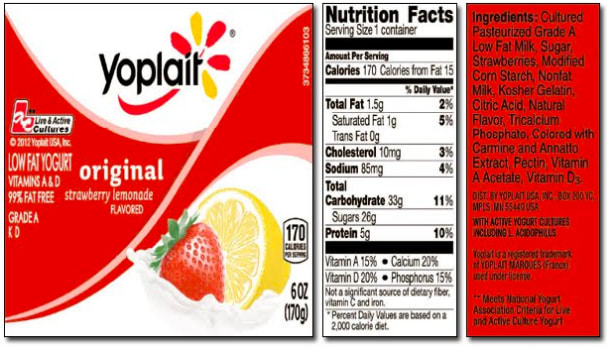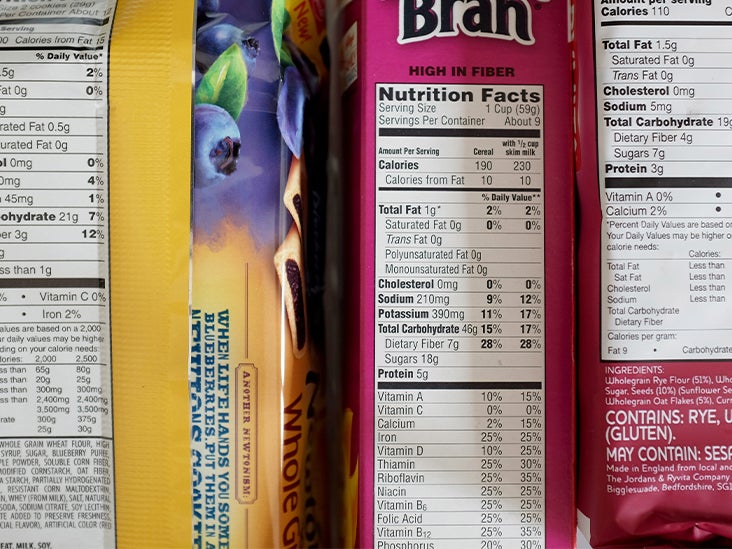38 reading nutrition fact labels
Reading Nutrition Facts Labels | Magaram Center Nutrition Experts Blog Vitamin D and potassium values are now required on the new label. Calcium and iron will continue to be required on the label. Vitamins A and C will no longer be required but can be included on a voluntary basis. The reason for this change is that most people get enough vitamin A and C in their daily diet. Updated Sodium Allowance How to Easily Read Nutrition Facts Labels | Underscore_ Sodium. Sodium (listed in milligrams) is necessary for keeping proper body fluid balance. The total Sodium shown on Nutrition Facts labels includes the Sodium from salt, plus Sodium from naturally occurring ingredients. The American Heart Association recommends no more than 2,300 mg of Sodium (about 1 tsp of salt) per day.
Nutrition Fact Labels: Why you need to read them. Pick up a food "item" and turn the product over and read the nutrition fact label. But here's the thing: I'm less worried about the percentage of fat to calories, or number of carbs or protein. Real food comes in all varieties and you NEED those basic building blocks of fat, carbs, and proteins. No, what I'm interested in is the ...
Reading nutrition fact labels
How to Read Nutrition Facts Labels the Right Way - GoodRx Nutrition Facts labels are required to list the total fat, saturated fat, and trans fats on packaged food products. It's important to choose foods with the right kinds of fats. Here are the differences between the fats you'll see on the label. Bad fats Saturated and trans fats are the less healthy types of fats. How to Understand and Use the Nutrition Facts Label | FDA When looking at the Nutrition Facts label, first take a look at the number of servings in the package (servings per container) and the serving size. Serving sizes are standardized to make it easier... How to Read a Nutrition Label: Common Supplement Facts Terms to Know Important Information on Nutrition Labels Below, we're going to explore 10 different areas found on nutrition labels that you need to pay attention to. Serving Size
Reading nutrition fact labels. Food label reading guide | Nutrition Australia What to look for when reading food and drink labels (per 100g) Health Star Ratings The Health Star Rating is a front of pack labelling scheme which can be used to make healthier food choices at a glance. The rating range is from ½ - 5 stars and the more stars, the healthier the choice. Recommended minimum star ratings for food and drink categories Nutrition facts label - Wikipedia The nutrition facts label (also known as the nutrition information panel, and other slight variations) is a label required on most packaged food in many countries, showing what nutrients and other ingredients (to limit and get enough of) are in the food. Labels are usually based on official nutritional rating systems.Most countries also release overall nutrition guides for general educational ... Learn How the Nutrition Facts Label Can Help You Improve Your Health Read the Nutrition Facts labels on your packaged food and drinks to keep track of sugars, fats, protein, and other nutrients. Most sodium we consume is from salt, and salt is commonly in processed foods. Read labels and choose the product with less sodium. Drink plain water instead of sugary beverages. When it comes to reading food labels, what's most important? Serving size. Check to see how many servings the package contains. The nutrition numbers on the rest of the label are for a single serving. So if you eat two ...
Reading Nutrition Facts Labels - EFNEP - Expanded Food and Nutrition ... Percent Daily Values (%DV) tell you how much of a certain nutrient you will get from the product. If the label says "10% Total Fat," this means one serving of the food is 10% of all the fat you should be eating each day. However, Daily Values (DV) are based on a 2,000 calorie per day diet. You may need more or less than 2,000 calories per day. How to Read Nutrition Facts Labels - Action for Healthy Kids Choosing foods that have smaller percentage Daily Value for saturated fat, added sugars and sodium. A small percentage or low amount of a specific nutrient is considered 5% DV or less. Choosing foods that have higher percentage Daily Value for vitamins, minerals and fiber. A higher percentage of a specific nutrient is considered 20% DV or more. PDF How Do I Understand the "Nutrition Facts" Label? Nutrition Facts label and ingredient list. When you go grocery shopping, take time to read the Nutrition Facts labels on the foods you purchase. Compare the nutrients and calories in one food to those in another. The information may surprise you. Make sure you aren't buying foods high in calories, saturated fat, trans fat, sodium and added ... How to Read a Nutrition Facts Label - The Family Meal Project How to Read a Nutrition Facts Label 1. Look at the serving size: Look at the serving size and the number of servings per package Compare your typical portion size to the one listed on the nutrition facts label For instance, if the serving size is 1 cup and you typically have 2 cups, that indicates you are consuming twice the calories and nutrients
The Basics of the Nutrition Facts Label The following is a quick guide to reading the Nutrition Facts label. Step 1: Start with the Serving Size Look here for both the serving size (the amount people typically eat at one time) and the number of servings in the package. Compare your portion size (the amount you actually eat) to the serving size listed on the panel. Quick Tips for Reading the Nutrition Facts Label Quick Tips for Reading the Nutrition Facts Label Use Percent Daily Value (%DV) as a guide. The %DV shows how much a nutrient in a serving of the food contributes to a total daily diet. As a general... How to Read Nutrition Facts Label - Food Network This carries over to all the other nutrients on the label. If 1 serving of a food has 120 mg of sodium, it can technically be labeled as a "low sodium" food. However, if you eat 3 servings, triple... How To Read Food and Beverage Labels How to read the Nutrition Facts label The U.S. Food and Drug Administration (FDA) requires a Nutrition Facts label on most packaged foods and beverages. At the top of the Nutrition Facts label, you will find the total number of servings in the container and the food or beverage's serving size.
Understanding Food Nutrition Labels | American Heart Association Make sure you get enough of the nutrients your body needs, such as: calcium, choline, dietary fiber, iron, magnesium, potassium, and vitamins A, C, D and E.* 5 - Understand % Daily Value. The % Daily Value (DV) tells you the percentage of each nutrient in a single serving, in terms of the daily recommended amount.
Reading Nutrition Labels - Cronometer Reading Nutrition Labels Hilary March 31, 2021 23:00; Updated; Follow. There are a number of different types of nutrition labels seen on products. It is good to be able to recognize your label type and the differences found on different labels especially if you are travelling in a different country or have moved to a new country recently.
How to Read a Nutrition Facts Label | Everyday Health When reading a nutrition facts label, look at the serving size first. "This helps put the nutrient information into context and allows comparison between products," says Goergen. Serving size is...

How to Understand and Use the Nutrition Facts Label | Reading food labels, Healthy nutrition ...
The Nutrition Facts Label: Look for It and Use It! | SNAP-Ed Read the Label includes lots of tips and challenges created especially for you! These printable activities help you learn more about servings, calories, and nutrients. So, get started today. You'll learn a lot and have fun when you Read the Label! Website Nutrition Facts Label (PDF,566 KB) Funding Source Food and Drug Administration Free Material
How to Read the Nutrition Facts Label | Ohioline In Figure 1, the serving size listed is 2/3 cup and there are 230 calories per serving (2/3 cup) of the food. If a person only ate half a serving of the food (1/3 cup), they would only get half the calories and other nutrients listed on the label. If a person ate two servings of the food (1⅓ cup), they would get twice the calories and other ...
PDF TO CARE 4 YOURSELF READING A NUTRITION FACTS LABEL - novoMEDLINK Potassium300mg 9% Protein 6g Total Carbohydrate18g Saturated Fat 0g Dietary Fiber 6g Vitamin A 0% Calcium 4% Folic Acid 0% Sugars 1g Trans Fat 0g Polyunsaturated Fat 0.5g Monounsaturated Fat 0.5g Vitamin C 0% Start here What you eat is important. But so is how much you eat. So start by looking here.




Post a Comment for "38 reading nutrition fact labels"